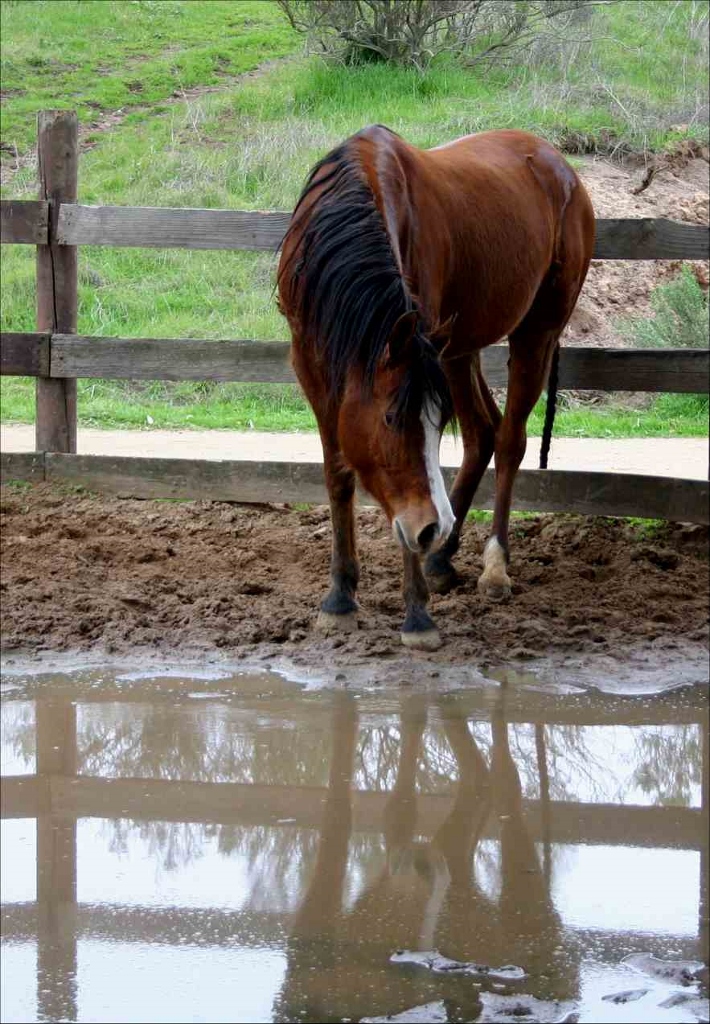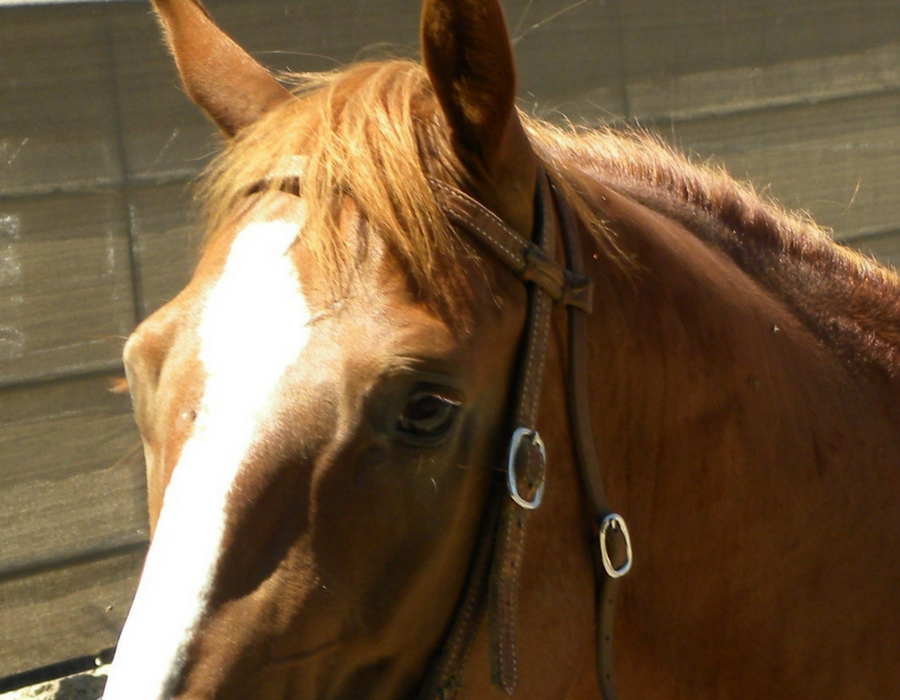The horses are whinnying and pacing in their pens as they anticipate their next meal. Snap, snap, snap…pop…rustle…the sweet scent of fresh hay fills your nostrils as another bale is opened. All eyes are on you now – the star of the show – as you quickly provide the next meal.
Feeding Horses is an Art
The horse is a creature designed to “forage”; to move and graze throughout the day. The digestive tract is designed for small meals, and the muscles in the neck are designed to allow the horse to eat with his head down as he wanders. In our efforts to domesticate the horse, the majority are kept in small, easy-to-manage stable situations – especially here in California where pasture land, in more heavily populated areas, is a commodity. Performance horses (or any working horse, for that matter) use up a horse-load of calories as their muscles propel them forward and tone up in the process. The horse is an herbivore, gathering all of his necessary nutrients from forage, grass, grains and succulents. What balance of these items the horse receives in his daily diet is basically up to us, the horse’s manager.
Feeding Horses is a Science
With so many variables to consider – work load, available feed, specific dietary or health issues, etc. – feeding horses can become quite complicated. Fortunately, we have a variety of resources at our disposal, including our veterinarians, trainers, barn managers, hay producers, etc., to give input as to the best decisions that we can make for our individual horses. Of course, there are general rules of thumb that apply to the majority of horses, including the fact that a horse will generally consume about 2% of his body weight in foodstuffs each day, meaning that a 1000 pound horse should be eating somewhere between 18 to 20 pounds per day. The bulk of this content should be “forage” (or some form of hay), which provides the fiber that the digestive tract needs to remain healthy.
Hay Types Available in California
So, let’s look at the forage, or hay types, available to us in California. There are two basic hay categories – grass hays (Timothy, Oat, Fescue, Bermuda and Orchard) and legumes (Alfalfa and Clover). Turning to some experts in the field, equimed.com , we learn that “grass hays have a lower protein content, and are suitable for easy keepers, and other horses that do not require extra calories. In general, grass hays are less expensive than legume hays in a lot of markets, but in other areas they can be much more expensive, depending upon factors of demand, growth, shipping, etc. Pricing is highly regional.”
Our friends at Equimed.com go on to describe legumes as “having a higher protein content than grass hays, and should be fed to active, working, lactating, young or convalescing animals that have higher nutritional needs. They can also be used as a treat for adult animals. Most animals like the taste of alfalfa hay, however, it is too rich to use as the only daily hay for most adult horses. It should be fed in moderation, or fed as a blend with grass or grain hays. Alfalfa hay should never be fed to animals with urinary tract problems.”
Most horse owners prefer to feed a mix of legume and grass hays, and most stables or boarding facilities will offer something like “Alfalfa in the AM and Grass or Forage in the PM”; this has become a sort of general rule. Various mixes are available in baled form to those who are interested in getting a little more specialized per feeding, for example, a popular blend is “80/20” which is 80% Timothy/Orchard and 20% Alfalfa.
Preservative Sprayed v.s. Organic
Another issue that is being considered more frequently as of late is the use of preservative sprays on hay. These sprays add color, as well as inhibit mold growth as the cut hay rests and dust accumulation in the baling process. Obviously, the horse also ingests these chemicals, and the jury is still out on the exact long term health risks. For this reason, “Organic” hay, which does not use preservative sprays, has been getting a lot of press as of late. This option may end up proving quite beneficial for some horses.
Choices for Feeding Your Horse
In the end, when deciding what to feed your horse, you should ask for a nutritional analysis of the hay that you are buying. This way, you will know how to supplement their forage intake correctly with things like grain and other feeds. Also, consider whether you want hay that has not been sprayed with preservatives and is rated as “Organic”. These questions should be answered by your hay supplier.
So, where can you acquire your horse’s “forage” needs here on the Central Coast? There are several feed stores throughout the county with with a variety of hay and supplement options. Farm Supply outlets are found throughout the county and have very reliable products, Atascadero Hay and Feed and Premiere Ag/Performance Hay are fantastic North County options and can deliver.
Cover photo: Sarah Williams




